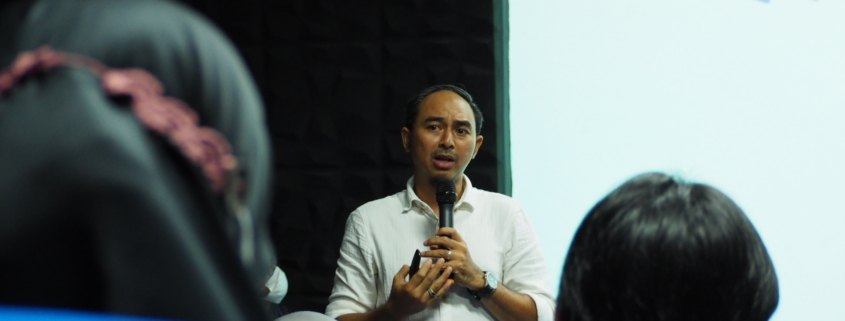To Capture Sensory Experience in Photo
A photo is more than just a still image that is contained within a frame and cannot move. A photograph might enable the spectator to perceive good and challenging circumstances. The smell of the waste gathered at the Piyungan Final Disposal Site can be captured in pictures (TPA).
In a series of DOC-Camp Photo Discussions and Exhibitions as a result of collaboration between PSDMA Nadim UII Department of Communication and Klik18, Zaki Habibi, a lecturer in the Communication Department at the Universitas Islam Indonesia, became one of the triggers for the photo discussion with the theme “Islam and Transformation”. In the discussion that showcased the 12 themes of the story photos, Zaki conveyed how a photo can turn on various human sensory sensors ranging from taste, smell, and even inner nuances.
“Seeing one photo, we will be taken to feel the rotten smell of a pile of garbage as high as a mountain,” said Zaki, describing the atmosphere of the Piyungan TPA.
Zaki also recounted how he was in the process of recognising a mosque in Sweden, which he initially felt foreign. But after a while, he got acquainted with the place and even conversed with another mosque-goer who is also a Gaza immigrant whose wife drowned in her search for asylum. “Photos can also turn on the inner sensor of suppressed sadness.” Zaki added.
To capture images that turn on the sensors in the body, it also takes a human sensory experience behind the camera itself. Photographers themselves need to explore experiences and keen observations for a long time. “It could be that we just hang out for weeks there, without taking photos,” said Zaki.
Zaki appreciates the Doc-Camp photo exhibition while quoting the curatorial notes from the representative of the curator, Risky Wahyudi, who has been able to present the image of Islam not as a normative matter about the teachings of goodness. But precisely because of seeing from a variety and a different perspective. “It takes sensory sensitivity and social sensitivity to produce a photographic work that is not only a normative issue but also a solution. It’s not just about the teachings of Islam but more about how Islam is present in various aspects of our society’s life,” Zaki quoted the curatorial statement.
“The detailed story in this photo will store and display the wealth of body and mind to make us enrich the other side of just a normative story,” said Zaki.




